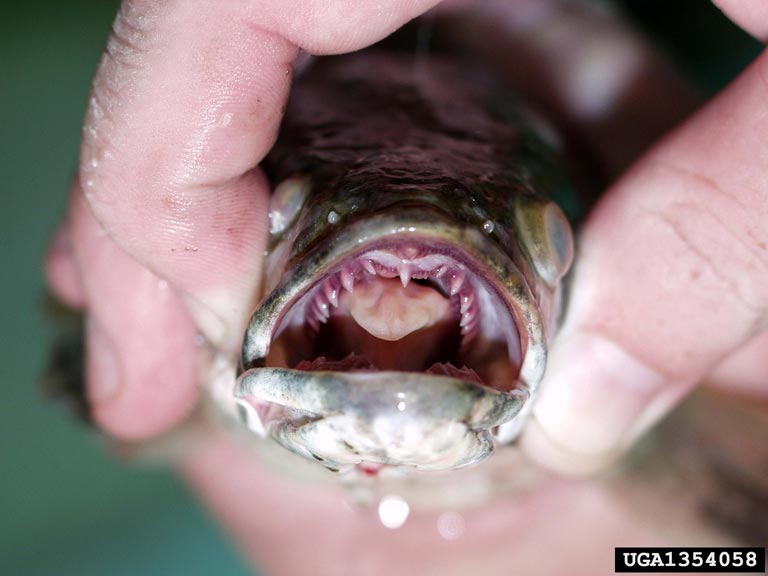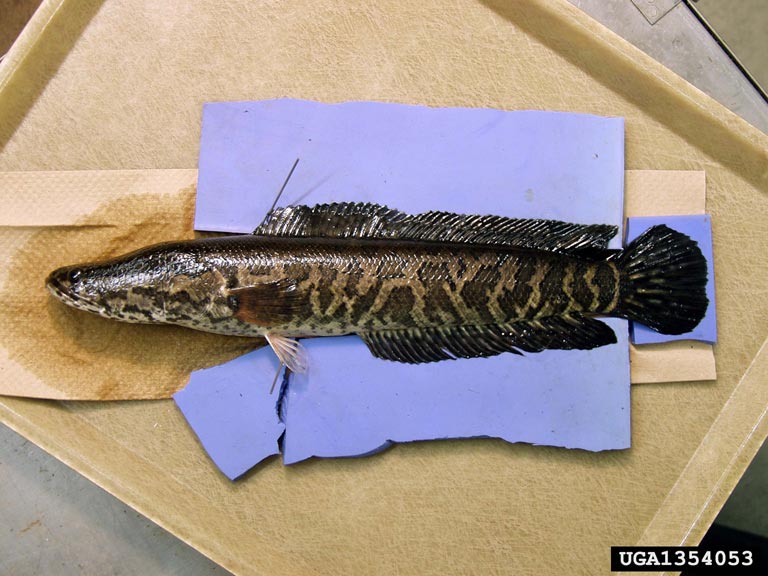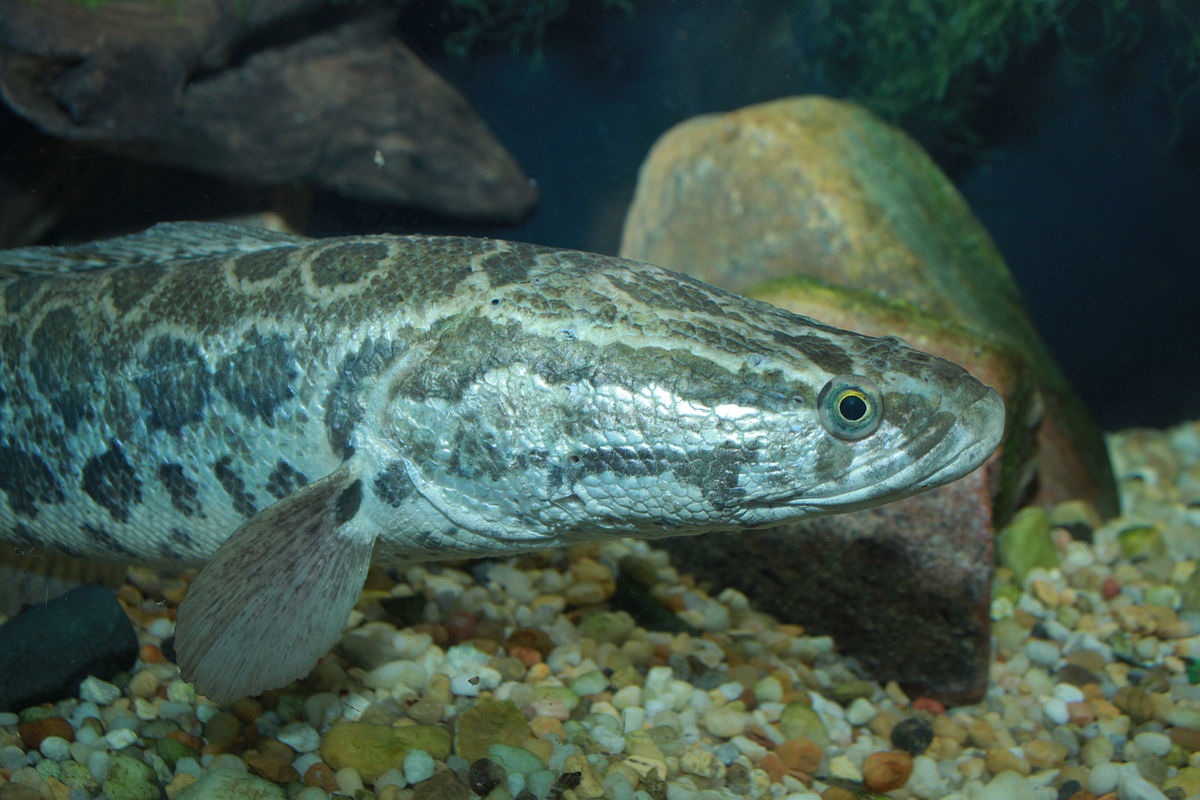Snakeheads

Snakeheads
(Channidae )
Tags: Aquatic
Identification and Reproduction
Identification:
- Snakeheads are members of the freshwater fish family Channidae. There are nearly 50 species in this family.
- The species that are a serious concern in BC are Northern (Channa argus), Giant (C. micropeltes), Blotched (C. maculata), and Chevron (C. striata). These snakeheads are much larger than other species in the family and can reach lengths of 1-2 meter long.
- These fish have long bodies and dorsal fins, large mouths and canine teeth.
- Their bodies are often golden, tan or a pale brown covered in dark blotches.
- Snakeheads have a single elongated dorsal and anal fin.
- Much like their name, snakeheads, their heads resemble a snakehead; head is small, compressed with their eyes sitting near the top of the head and covered in large scales.
Reproduction:
- A spawning female can release up to 15,000-50,000 eggs at once, depending on species.
- They can spawn up to 5 times a year, depending on conditions.
- Eggs can hatch as early as a day or two after fertilization.
- Fry will cluster near the surface of the nest until their fins develop.
- Adult snakeheads will protect and guard their eggs and young.
Habitat & Ecology
- They are capable of breathing air with their gills and can migrate short distances over land. They are able to survive on land for up to 4 days in humid conditions.
- These fish can also exchange oxygen and carbon dioxide through their skin and can tolerate low oxygen levels.
- When travelling overland they have been observed predating on snakes, frogs and even small mammals and birds.
- They are also obligatory air breathers and need to surface to survive.
- These fish are found in freshwater lakes, ponds, streams, ditches and any shallow waters with vegetation.
- As juveniles they hunt in groups but once reaching sexual maturity they become solitaire.
- They are not active fish, they tend to move only when surfacing for air or to avoid predation.
- A Blotched snakehead was discovered in Burnaby in 2012.
Impacts
- They can become an apex predator very quickly in introduced environment.
- They can out-compete native aquatic species for food and shelter.
- Capable of dispersing rapidly through connected watersheds.
- Snakeheads are very adaptive and pose a high risk for introduction in BC.
- Are carriers of diseases and parasites that can infect native fish and even humans.
- They are very aggressive when protecting their eggs and nests, potentially causing harm to humans that come in contact.
Management
- All species under the family Channidae are illegal to import, possess, breed, release and transport in British Columbia.
- Refrain from buying snakeheads for aquarium use.
- Never dump unwanted aquarium contents into natural waterbodies.
- Report any sightings of snakeheads.
Resources
Download BC's Invasive Species Alert! for snakeheads here.
For more information please refer to the USGS's Invasive Species Program- Snakeheads, Aquatic Invaders here.
Header photo (George Berninger Jr.).





